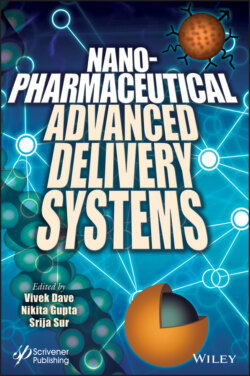Читать книгу Nanopharmaceutical Advanced Delivery Systems - Группа авторов - Страница 57
2.4 Modes of Transport of Nanoparticulate Carriers
ОглавлениеNanocarriers have the capability to cross the different biological barriers via various routes as shown in Figure 2.2a. The fate of nanoparticle is decided upon reaching the circulation either through lymphatic system or hematogenous system. The nanocarriers can be transported both actively and passively across the membranes in the body. Surface modified nanocarriers decorated with ligands/antibodies that bind to specific receptors expressed on the cell surface especially in cancer/tumor and deliver the selectivity of drug delivery is called active targeting of nanocarriers [103]. The intrinsic imbalance of the angiogenic receptors and growth factors results in disorganized cell surface with leaky vasculature and compromised lymphatic drainage resulting in enhanced permeability and retention effect (EPR). Nanoparticles with molecular weight above 50 kDa can undergo enhanced EPR effect and passively accumulate in the tumor cells. Further, nanocarriers with size and surface modified to provide prolonged circulation time (PEGylated nanocarriers) escape capture by reticuloendothelial system and deliver drugs passively [104, 105].
Dube et al. [106] have elaborately discussed various techniques for active and passive targeting of nanoparticulate carriers in tuberculosis in Figure 2.2b. Passive targeting in pulmonary tuberculosis is particularly possible via inhalation, since particles possess size (~5 μm) adequate enough to be engulfed by alveolar macrophage. This passive targeting is possible because of the natural propensity of the macrophages to engulf particles. Drugs are passively delivered in extrapulmonary TB via inhalation, intravenous, and oral routes. Once in blood circulation, the nanocarriers are easily taken up by phagocytic cells of the mononuclear phagocyte system (MPS) [107]. Further, PEGylation of drug carriers prolongs the half-life of nanoparticulate carriers [108].
Figure 2.2a Mechanism of transport of nanocarriers across various biological barriers.
Figure 2.2b Mechanism of drug delivery in tuberculosis. (i) Delivery of nanoparticulate carriers to lungs passively via dendritic cell or macrophages
As discussed already, active targeting of nanocarriers is possible by engineering the surface of these carriers with cell-specific ligands including proteins, peptides, polysaccharides, glycolipids, glycoproteins, monoclonal antibodies, etc. such that drug is delivered to the pathologic sites or crosses biological barriers through molecular recognition. Targeted nanocarriers can potentially differentiate between the healthy and infected cells via expression of cell surface receptors, and hence, cell-specific active binding of nanocarriers takes place.
